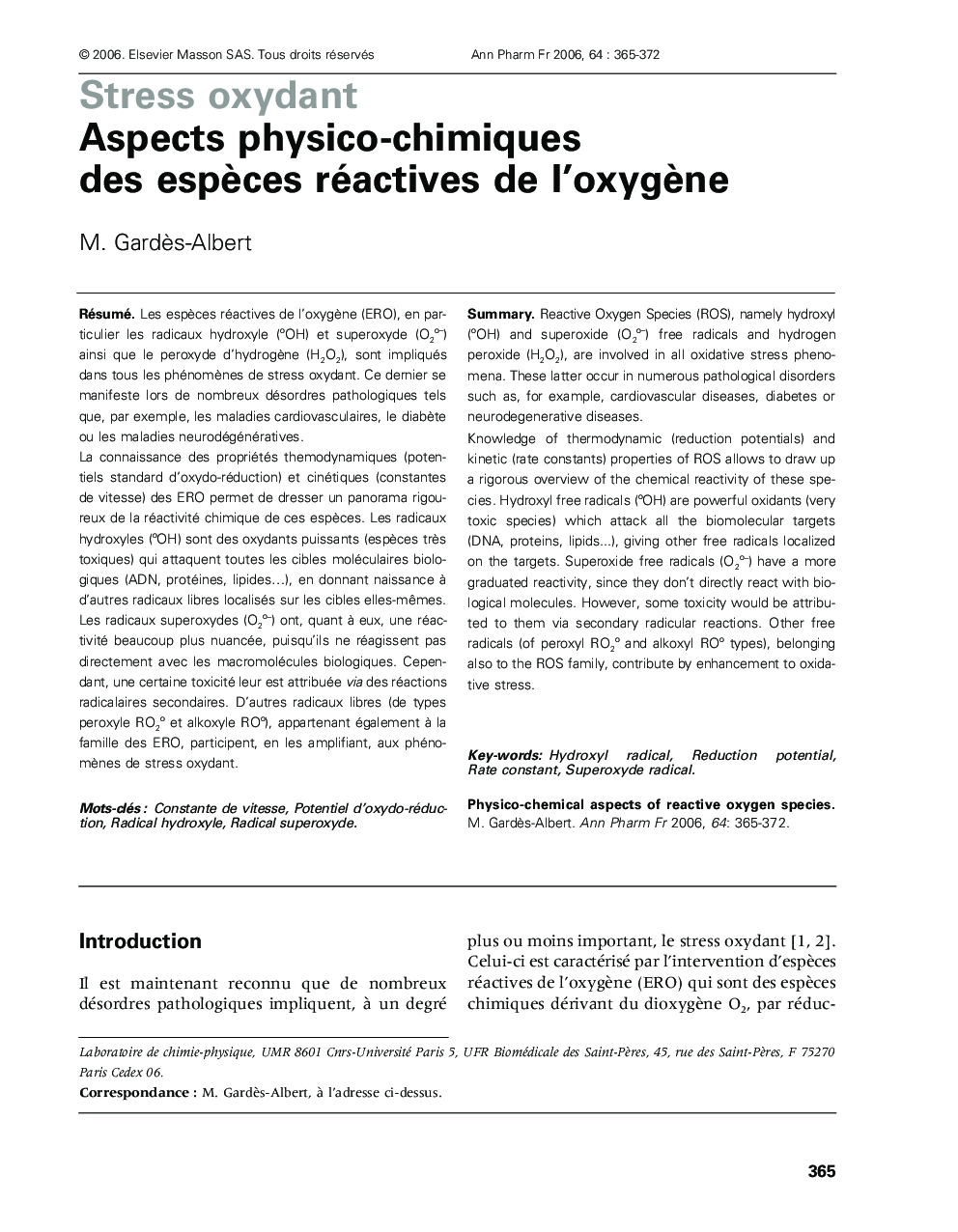| Article ID | Journal | Published Year | Pages | File Type |
|---|---|---|---|---|
| 2478550 | Annales Pharmaceutiques Françaises | 2006 | 8 Pages |
Abstract
Knowledge of thermodynamic (reduction potentials) and kinetic (rate constants) properties of ROS allows to draw up a rigorous overview of the chemical reactivity of these species. Hydroxyl free radicals (°OH) are powerful oxidants (very toxic species) which attack all the biomolecular targets (DNA, proteins, lipidsâ¦), giving other free radicals localized on the targets. Superoxide free radicals (O 2 °- ) have a more graduated reactivity, since they don't directly react with biological molecules. However, some toxicity would be attributed to them via secondary radicular reactions. Other free radicals (of peroxyl RO2 ° and alkoxyl RO° types), belonging also to the ROS family, contribute by enhancement to oxidative stress.
Related Topics
Health Sciences
Pharmacology, Toxicology and Pharmaceutical Science
Drug Discovery
Authors
M. Gardès-Albert,
